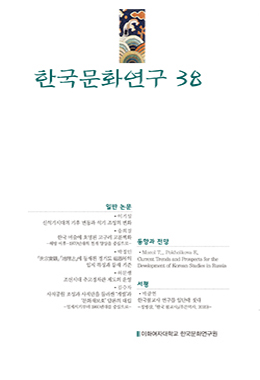사직단 및 사직공원은 해방 이후에도 정체성을 제대로 찾지 못하고 있는 대표적 문화유적 중 하나이다. 일제시기 사직단의 훼손 중 가장 심각한 것은 사직단의 기능을 정지시킨 것 외에도 사단과 직단, 두 단만 남기고 나머지 시설물들을 철거, 원형을 거의 찾을 수 없게 만든 것, 그리고 공원으로 조성하면서 신성시되었던 제의공간을 위락공간으로 만든 것이다. 사직단의 원형은 일제가 패망되고, 해방된 이후에도 6.25 전쟁 등 시대 상황의 급변 등으로 방치된 채 복원되지 못하였다. 특히 1960년대는 도시계획에 따른 ‘개발’에 밀려 사직단의 중심 요소들이 더욱 축소되거나 변형되었다. 사직정문은 도로건설계획에 의거, 보행자 및 운전자들의 운행을 위해 이전되면서 사직단으로 들어가는 ‘문’으로서의 기능을 상실한 채로 현재에 이르고 있다.
사직단 복원 관련 논의들은 현재뿐 아니라 해방 이후 1960년대의 ‘개발’과 ‘문화재 보호’ 담론의 대립을 그대로 보여주고 있다. 그리고 일제시기 변형된 공간들의 복원 및 정체성 확립을 둘러싼 담론의 고찰은 탈식민 문제를 바라보는 다양한 인식을 살펴보는 것이기도 하다.
사직공원 및 사직단의 정체성 회복을 둘러싼 논의들은 큰 틀에서 ‘민족’ 담론과 ‘개발’ 담론의 대립적 성격을 보여주는 것이기도 하지만 다른 한편으로는 일제 식민시기를 거치면서 왜곡, 변형된 상징공간의 정체성 회복 과정의 지난함을 살펴보는 데도 유용한 주제라고 할 수 있다.
Sajik's symbolism was undermined when the Sajik became a historical site without its “unique” role due to the abolition of Japanese rituals and the establishment of a park. Even after liberation, Sajik was one of the representative historical spaces that did not find its identity
The most serious of the damages of the Sajik during the Japanese imperialism, besides suspending the functions of the Sajik, resulted in making the archetype and the altar, two stages almost impossible to find the original form, and changing the sacred ritual space into an amusement space by constructing a park. .
The archetype of the Sajik was left unchanged due to the sudden changes of the times, such as the Korean War, even after the defeat of Japan. In particular, in the 1960s, the central elements of the Sajik was further reduced or transformed by 'development' according to city planning. The Sajik Main Gate is representative. The Sajik Main Gate has reached the present time, losing its function as a “gate” due to the city planning.
The discussion of the identity of the Sajik and the Sajik Park is related to the difference in perceptions of 'historical value' and 'presentity'.
The debates surrounding the recovery of the identity of the Sajik show the oppositional character of the "national" discourse and the "development" discourse in the larger framework. On the other hand, it is also a useful topic to look at the past of the process of restoring the identity of the symbol space, which has been transformed and transformed during the Japanese colonial period.
Discussions on reinstatement of the Sajik show the conflict between the present and the discourse on the preservation of cultural property to liberation from the 1960s and 1970s.
In addition, the consideration of discourse surrounding the restoration and identity of the transformed spaces during the Japanese colonial period also examines various perceptions of the post-colonial problem.
In addition, looking at the issue of identity recovery in relation to colonial liquidation, focusing on the discourse of ‘national’ and ‘public’, will not only provide an accurate recognition of the 'era' in which discourse is raised, but will also provide important implications for future identity formation.




